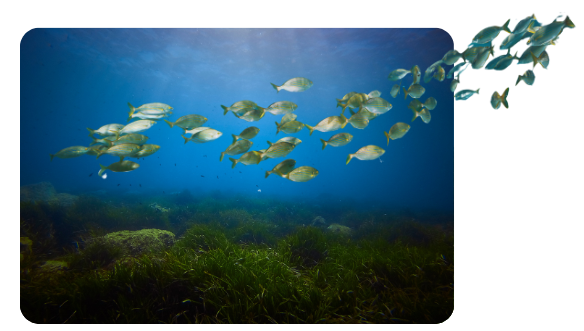Project
Atmospheric Composition and Radiative forcing changes due to UN International Ship Emissions regulations (ACRUISE)

Project Start: January 2019 | Project End: January 2024
Principal Investigator: Dr Ming-Xi Yang
Other Participants: Dr Frances Hopkins, Dr Tim Smyth, Dr Tom Bell
Ship emissions are significant sources of polluting aerosols in coastal regions, causing hundreds of thousands of premature deaths per year globally. To address this, in 2015 the International Maritime Organization (IMO) ordered a reduction in the maximum ship sulphur emissions in coastal Sulphur Emission Control Areas (SECAs) of Europe and North America. From January 2020 this will be expanded to international waters, to reduce sulphur emissions from 3.5% to 0.5% of fuel mass.
This reduction in sulphur emissions from shipping is predicted to almost halve the number of premature deaths globally from sulphate aerosols but less sulphate in the atmosphere is also expected to reduce cloud brightness, reflecting less incoming solar radiation, which may ultimately lead to an increase in global average temperature.
ACRUISE will use a multidisciplinary approach to quantify the impact on atmospheric chemistry and climate due to the introduction of the IMO’s regulation of sulphur emissions from shipping in international waters in January 2020. This approach will combine in situ observations (aircraft and surface stations), satellite analysis and modelling across a large range of scales (from cloud, to regional to global) to quantify the chemical and climatic impact of the 2020 sulphur emission regulation.
ACRUISE is endorsed by the Surface Ocean Lower Atmosphere Study (SOLAS).
Related Publications
Watson-Parris D, Christensen M, Laurenson A, Clewley D, Gryspeerdt E, Stier P, (2022). Shipping regulations lead to large reduction in cloud perturbations.. Proceedings of the National Academy of Sciences of the United States of America, 119 (41), pp. e2206885119
Manshausen P, Watson-Parris D, Christensen M, Jalkanen J, Stier P, (2022). Invisible ship tracks show large cloud sensitivity to aerosol.. Nature, 610 (7930), pp. 101-106
Salzmann M, Ferrachat S, Tully C, Münch S, Watson‐Parris D, Neubauer D….. Tegen I, (2022). The Global Atmosphere-aerosol Model ICON-A-HAM2.3-Initial Model Evaluation and Effects of Radiation Balance Tuning on Aerosol Optical Thickness.. Journal of advances in modeling earth systems, 14 (4), pp. e2021MS002699
Williams A, Stier P, Dagan G, Watson-Parris D, (2022). Strong control of effective radiative forcing by the spatial pattern of absorbing aerosol. Nature Climate Change,
Watson-Parris D, Smith C. (2022). Large uncertainty in future warming due to aerosol forcing. Nature Climate Change,
Harder P, Watson-Parris D, Stier P, Strassel D, Gauger N, Keuper J. (2022). Physics-informed learning of aerosol microphysics. Environmental Data Science,
Watson‐Parris D, Rao Y, Olivié D, Seland Ø, Nowack P, Camps‐Valls G, Stier P… Roesch C. (2022). ClimateBench v1.0: A Benchmark for Data‐Driven Climate Projections. Journal of Advances in Modeling Earth Systems,
White C, Ussher S, Fitzsimons M, Atkinson S, Woodward E, Yang M, Bell T, (2021). Inorganic nitrogen and phosphorus in Western European aerosol and the significance of dry deposition flux into stratified shelf waters. Atmospheric Environment,
Sand M, Samset B, Myhre G, Gliß J, Bauer S, Bian H….. Watson-Parris D, (2021). Aerosol absorption in global models from AeroCom phase III. Atmospheric Chemistry and Physics,
Christensen M, Gettelman A, Cermak J, Dagan G, Diamond M, Douglas A, Feingold G… Yuan T. (2021). Opportunistic Experiments to Constrain Aerosol Effective Radiative Forcing.
Zhang S, Stier P, Watson-Parris D. (2021). On the contribution of fast and slow responses to precipitation changes caused by aerosol perturbations. Atmospheric Chemistry and Physics,
Watson-Parris D, Williams A, Deaconu L, Stier P. (2021). Model calibration using ESEm v1.1.0 – an open, scalable Earth system emulator. Geoscientific Model Development,
Watson-Parris D, (2021). Machine learning for weather and climate are worlds apart.. Philosophical transactions. Series A, Mathematical, physical, and engineering sciences, 379 (2194), pp. 20200098
Watson-Parris D, Sutherland S, Christensen M, Stier P, (2020). A large-scale analysis of pockets of open cells and their radiative impact.
Mora d, Fileman , Vance, (2020). Environmental Impact of Ships. United Kingdom: Cambridge University Press
Allen R, Lamarque J, Watson‐Parris D, Olivié D, (2020). Assessing California Wintertime Precipitation Responses to Various Climate Drivers. Journal of Geophysical Research: Atmospheres,
Dagan G, Stier P, Watson‐Parris D, (2020). Aerosol Forcing Masks and Delays the Formation of the North Atlantic Warming Hole by Three Decades. Geophysical research letters, 47 (22), pp. e2020GL090778
Gettelman A, Lamboll R, Bardeen C, Forster P, Watson‐Parris D. (2021). Climate Impacts of COVID‐19 Induced Emission Changes. Geophysical Research Letters,
